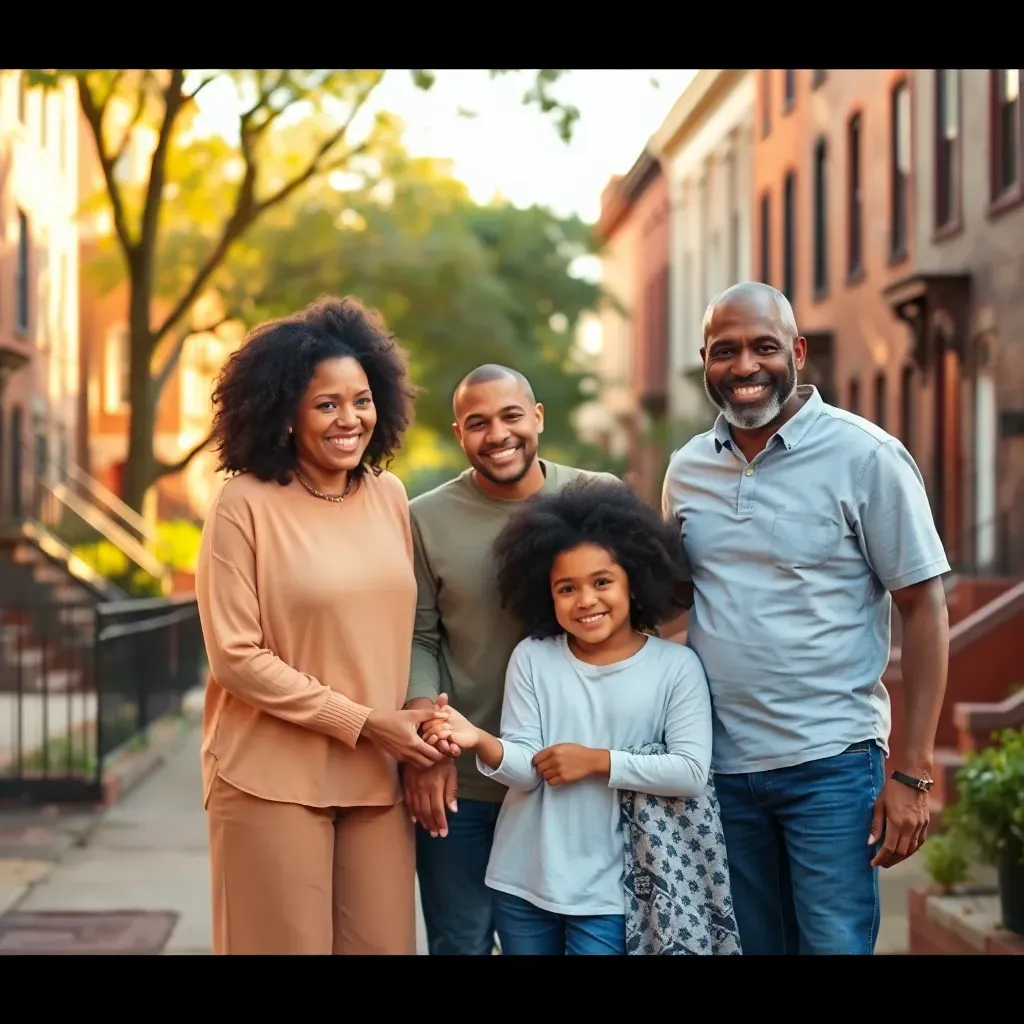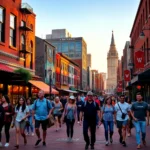Is Baltimore family safety at risk? Shocking truths revealed
- Getting Real About Baltimore’s Family Safety
- Baltimore’s Safety Landscape for Families
- Baltimore Crime Breakdown: What Families Need to Know
- What Makes Baltimore Family Safety a Concern?
- Real Voices: What Baltimore Families Say About Safety
- How to Keep Your Family Safe in Baltimore: Practical Tips
- Best Neighborhoods and Areas for Families in Baltimore
- Comparing Baltimore to Other Risky Towns in the US
- Community Efforts and Resources Supporting Family Safety
- What the Future Holds: Is Baltimore Becoming Safer for Families?
- The Real Deal on Baltimore Family Safety
- Opinions From Real Baltimore Families and Experts
- References and Further Reading
Getting Real About Baltimore’s Family Safety
Baltimore, often called “Charm City,” is a place full of history, culture, and vibrant neighborhoods. It’s a city where old meets new, with bustling harbor views and rich traditions. But alongside its charm, Baltimore carries a reputation as one of the more challenging cities in the US when it comes to safety. This reputation can make families pause and wonder: is Baltimore family safety really something to worry about?
The truth is, Baltimore’s safety landscape is complex. Crime rates vary widely across neighborhoods, and while some areas face more challenges, others offer welcoming, family-friendly environments. This article aims to break down what family safety in Baltimore really looks like — highlighting both the risks and the safe havens. We’ll share honest data, stories from locals, and practical advice so families can make informed decisions and feel secure.
Baltimore’s Safety Landscape for Families
When we talk about family safety in a city like Baltimore, it’s more than just crime numbers. It’s about how safe parents feel walking their kids to school, how secure homes and parks are, and whether communities have the resources to support families through tough times.
Baltimore’s neighborhoods vary a lot. Some areas, like Roland Park and Towson, are known for their quiet streets, good schools, and active community groups. Others, such as parts of West Baltimore and Middle East, face higher crime rates and economic challenges. This mix means families need to understand where they’re living or visiting.
Crime affects families differently than tourists or single adults. Families often look for safe schools, playgrounds, and community centers — places where kids can thrive without worry. Misconceptions about Baltimore often paint the whole city as unsafe, but many residents point out that with the right neighborhood choice and precautions, families can live comfortably.
Community plays a big role. Schools, parks, and local programs often act as anchors for family safety. When neighborhoods have strong community ties and resources, families tend to feel more secure and supported.
Baltimore Crime Breakdown: What Families Need to Know
Baltimore’s crime statistics show a city with challenges but also signs of improvement. Violent crime, including assaults and robberies, has historically been higher than the national average. However, recent years have seen some declines in certain categories.
To keep it simple:
- Violent crime means crimes like assault, robbery, and homicide — things that threaten personal safety.
- Domestic violence involves harm within families or intimate relationships, a serious concern for family safety.
- Property crime covers theft, burglary, and car break-ins — crimes that affect homes and belongings.
Neighborhoods like West Baltimore and Middle East report higher rates of these crimes, often linked to gang activity and economic struggles. Meanwhile, areas such as Roland Park, Towson, and Inner Harbor generally have lower crime rates, making them more attractive for families.
Crime impacts not just streets but also parks and schools. Families living near higher-risk areas may notice increased police presence or community watch programs. Schools in safer neighborhoods tend to have better resources and less disruption, contributing to a more secure environment for children.

What Makes Baltimore Family Safety a Concern?
Several factors contribute to concerns about Baltimore family safety:
- Poverty and abandoned properties Areas with economic hardship often see more crime and less community upkeep, which can make streets feel less safe.
- Gang presence Some neighborhoods experience gang-related activity, which can increase risks for residents.
- Traffic and infrastructure Poorly lit streets and limited public transportation options can make certain areas feel unsafe, especially at night.
- Wealth inequality The gap between richer and poorer neighborhoods affects access to resources like quality schools and parks.
- Domestic violence and family crises These issues directly impact family security and require community support and intervention.
The Baltimore Police Department works alongside community watch groups to improve safety, but response times and coverage can vary by neighborhood. Families living in or near crime-ridden or dodgy neighborhoods often develop their own safety routines and rely heavily on local networks.
Real Voices: What Baltimore Families Say About Safety
Many Baltimore families share a mix of concerns and hope when it comes to safety. Parents often mention the importance of choosing the right neighborhood and staying aware of surroundings.
“I love living in Baltimore, but we always make sure to lock our doors and avoid walking alone after dark in certain areas.” – Local parent from Federal Hill
Community leaders emphasize the power of neighborhood watch programs and family support centers in creating safer environments.
“Our Family Crisis Center works closely with families facing domestic violence, helping them find safety and resources.” – Community outreach worker
Police officers note that while crime exists, many incidents are isolated and not random, often linked to specific groups or disputes.
“We encourage families to stay informed and use community resources. Safety improves when people look out for each other.” – Baltimore Police Department representative
For more firsthand accounts, community forums like Reddit’s Baltimore threads and local Facebook groups offer ongoing conversations where families share tips and experiences.
How to Keep Your Family Safe in Baltimore: Practical Tips
Families can take simple steps to boost their safety in Baltimore:
- Stick to well-known, tourist-friendly neighborhoods like Inner Harbor and Mount Vernon.
- Be cautious in sketchy or risky areas, especially after dark. Trust your instincts if a street or group feels shady.
- Use rideshare services or reliable transportation when traveling at night rather than walking alone.
- Secure your home with good locks, alarm systems, and consider AI-powered video monitoring for extra protection.
- Keep valuables out of sight and lock cars to prevent theft and break-ins.
- Engage with local community safety programs such as Family Crisis Centers and Community Watch groups.
Technology is playing a growing role. AI-enhanced security cameras and neighborhood alert apps help families stay informed and respond quickly to potential threats.
Best Neighborhoods and Areas for Families in Baltimore
Here’s a comparison table of popular Baltimore neighborhoods for families, highlighting key factors:
| Neighborhood | Crime Rate | Schools | Parks & Recreation | Community Vibe | Traffic & Shops |
|---|---|---|---|---|---|
| Inner Harbor | Low | Good | Excellent waterfront parks | Tourist-friendly, busy | Walkable, many shops |
| Federal Hill | Moderate | Good | Several parks | Young families, lively | Good public transit |
| Canton | Moderate | Good | Waterfront parks | Trendy, family-friendly | Busy, good shops |
| Guilford | Low | Excellent | Quiet parks | Affluent, quiet | Less traffic |
| South Baltimore | Moderate | Fair | Community parks | Mixed, improving | Growing shops |
Choosing a neighborhood depends on balancing safety, schools, and lifestyle. Families should visit areas at different times and talk to residents to get a feel for the community.
Comparing Baltimore to Other Risky Towns in the US
Baltimore is often compared to other cities with higher crime rates. Here’s a quick look at how it stacks up:
| City | Violent Crime Rate (per 100k) | Family Safety Concerns | Community Resources |
|---|---|---|---|
| Baltimore | ~800 | Gang activity, property crime | Growing community programs |
| Detroit | ~900 | High violent crime, poverty | Active neighborhood watches |
| St. Louis | ~1,000 | Violent crime hotspots | Strong police-community efforts |
| Memphis | ~850 | Property crime, domestic violence | Family support centers |
Baltimore’s unique mix of history, economic growth, and community engagement offers families opportunities despite challenges. Many choose to stay for jobs, culture, and strong local ties.
Baltimore Family Safety: Crime & Neighborhood Comparison
Violent Crime Rates (per 100k) Comparison
Baltimore
800
Detroit
900
St. Louis
1,000
Memphis
850
Baltimore’s violent crime rate is high but slightly lower than Detroit, Memphis, and St. Louis. Community programs and policing efforts are growing to help families feel safer.
Neighborhood Safety & Family-Friendly Features
| Neighborhood | Crime Rate | Schools | Parks & Rec | Community Vibe | Traffic & Shops |
|---|---|---|---|---|---|
| Inner Harbor | Low | Good | Excellent waterfront parks | Tourist-friendly, busy | Walkable, many shops |
| Federal Hill | Moderate | Good | Several parks | Young families, lively | Good public transit |
| Canton | Moderate | Good | Waterfront parks | Trendy, family-friendly | Busy, good shops |
| Guilford | Low | Excellent | Quiet parks | Affluent, quiet | Less traffic |
| South Baltimore | Moderate | Fair | Community parks | Mixed, improving | Growing shops |
Families looking for safer spots should consider neighborhoods like Inner Harbor and Guilford, which offer low crime and strong community vibes.
Community Efforts and Resources Supporting Family Safety
Baltimore’s safety is not just about police presence. Community engagement is key. Local organizations, family crisis centers, and victim witness units provide vital support.
- Family Crisis Centers offer counseling and emergency help for families facing domestic violence.
- Community Watch programs encourage neighbors to look out for one another, reporting suspicious activity.
- Public safety initiatives focus on youth programs to reduce gang involvement and violence.
- Neighborhood clean-ups and lighting improvements help make streets feel safer.
Families can get involved by attending local meetings, volunteering, or simply staying informed through community newsletters and social media groups.
What the Future Holds: Is Baltimore Becoming Safer for Families?
Recent years have brought promising signs. Homicides dropped by about 36% in 2023, and non-fatal shootings decreased by 30%. Economic growth is creating jobs, and youth programs aim to steer young people away from crime.
Still, challenges remain. Some neighborhoods continue to struggle with poverty and violence. But new policing strategies and security technologies, like AI video monitoring, are helping families feel more secure.
Experts suggest that Baltimore’s family safety will improve as long as community efforts and economic investments continue. Families considering moving here should weigh risks but also recognize the city’s potential.
The Real Deal on Baltimore Family Safety
Baltimore’s family safety is a mix of risks and opportunities. While some neighborhoods face higher crime, many areas offer safe streets, good schools, and strong communities. Families can protect themselves by choosing neighborhoods wisely, staying aware, and engaging with local resources.
The key takeaway? Baltimore family safety depends largely on informed choices, community support, and practical precautions. It’s not a city to fear outright, but one to understand deeply.
Opinions From Real Baltimore Families and Experts
“Living here means knowing your neighborhood and trusting your community. We’ve built a network of families who watch out for each other.” – Baltimore resident, Federal Hill
Source
“The Family Crisis Center has been a lifeline for many families dealing with domestic violence. It’s about safety and hope.” – Community worker
Source
“Crime is real, but it’s mostly concentrated in certain areas. Families who stick to safer neighborhoods and stay alert do just fine.” – Baltimore Police Department official
Source
References and Further Reading
What do you think about Baltimore’s family safety? Have you or someone you know lived here and want to share your experience? How would you improve community safety or support families in Baltimore? Feel free to ask questions or share your thoughts below!
 Is Baltimore safe to visit? Shocking truths every traveler must know
Is Baltimore safe to visit? Shocking truths every traveler must know Most dangerous neighborhoods in Baltimore you won’t believe
Most dangerous neighborhoods in Baltimore you won’t believeSi quieres conocer otros artículos parecidos a Is Baltimore family safety at risk? Shocking truths revealed puedes visitar la categoría Baltimore.

Leave a Reply